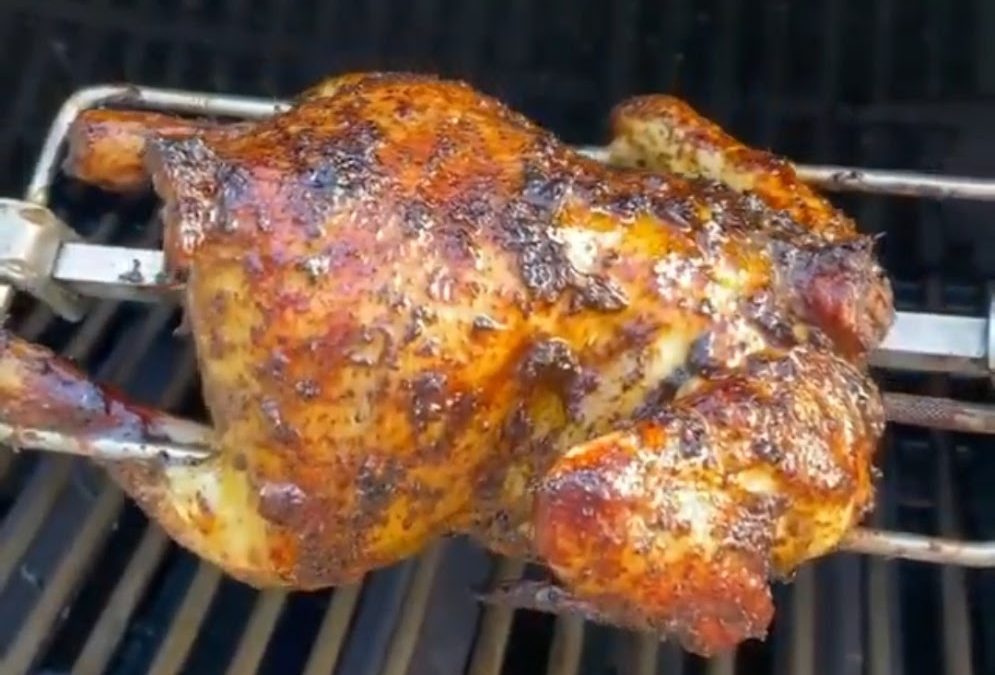Dry rubs on meat, fish and poultry can undoubtedly “take your cooking to a new level of deliciousness”[1] when roasting, grilling, or braising. The best way to get the most flavour is to rinse your protein under cold water “to remove any surface contaminants”[2], pat dry, coat with olive oil and then gently massage in generous amounts of your chosen rub. You can use a wet hand/dry hand method, keeping one hand dry to handle the spices and one hand to handle the meat.[3] One recommendation is to let the meat sit before cooking by wrapping it in plastic wrap and refrigerating for 2-4 hours (to overnight). The reason for this is because the dry spices will draw liquid out of the meat or vegetables, and that liquid—now seasoned—will be reabsorbed once it’s been wrapped up.[4] You can sprinkle on some more rub right before cooking, and add any sauces right at the end. Et voila, bon appétit.
When I used to hear the words “dry rub” what came to mind was Fred Flintstone’s gigantic rack of ribs strapped to the hood of his car. Rubs are intended to enhance different proteins, but I am a vegetarian. However, I’ve learned that it’s such a simple shift to find creative ways to use these fragrant (vegan) spice blends in everyday vegetarian cooking.
This January marks 30 years since I’ve been vegetarian (lacto-ovo). To mark the anniversary here is a list of 30 ways that I regularly use a variety of Kawartha Spice Co. Dry Rubs and blends in my kitchen:
- added to oatmeal and smoothies
- mixed with tahini or cashew butter to top oatmeal
- mixed with coconut oil to bake apples (to serve over oatmeal or pancakes or french toast)
4. to season roasted potatoes
5. sprinkled over plain hummus
6. to season roasted cherry tomatoes
7. in cheesy rice and beans
8. mixed with oil as a tofu marinade
9. to season chick pea salad
10. in vegan cream cheese
Coffee & Dessert Rose Sprinkle:
11. to flavour chocolate bark
12. in smoothies
13. for potato curry and veggie korma
14. added to batter for pakoras
15. in Singapore noodles
16. to flavour popcorn
17. to season roasted cauliflower
18. added with salt to cooking liquid when boiling dried black beans
19. in sautéed mushrooms
20. to season yam fries
21. to season any sheet roasted veggies
22. over any style of eggs
23. mixed with cornstarch as a dredge to fry tofu
24. added to salad dressings
25. in every stir fry
26. to season homemade croutons
27. in pasta salad with roasted veggies
28. added to breadcrumbs to coat roasted zucchini sticks
29. sprinkled over garlic bread
30. to season kale chips.
The first time I paired Beef Dry Rub with potatoes (and not a gigantic rack of prehistoric ribs) it suddenly opened up a myriad of creative and fun possibilities in the kitchen.
Et voila, bon appétit.
by Nadia Ragbar
[1] https://kawarthaspice.ca/
[2] https://www.grillmastersclub.com/blogs/blog/how-to-apply-dry-rub
[3] ibid
[4] https://serious-foodie.com/the-10-best-ways-to-use-dry-rubs-seasoning-blends/






